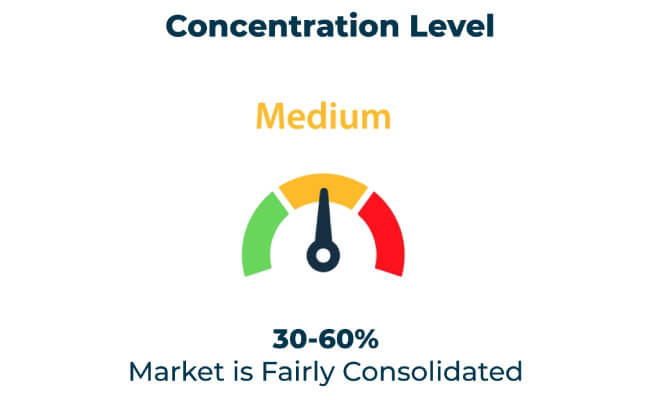The respiratory inhaler devices market in Japan is expected to yield great gains accordingly. Between 2025 and 2035, its revenue will reach USD 2,961.0 million, with a 3.2% CAGR.
| Attribute | Details |
|---|---|
| Projected Industry Size (2035F) | USD 2,961.0 million |
| Value CAGR (2025 to 2035) | 3.2% |
The main cause of the rise in this market segment is the increase in respiratory diseases, particularly asthma and COPD. The smoking epidemic as well as the rise in air pollution, and the overlap between asthma and COPD that makes the diagnosis complex are the significant drivers of this market. Together with the innovation of pulmonary disease drugs, the strategic partnership that the pharmaceutical companies are taking to the research and development level is driving its market growth.
According to the latest information from the Japanese Ministry of Health, Labour and Welfare, nearly 200,000 new cases of COPD are diagnosed each year while this disease is also prevalent in 0.2-0.4% of the people in different age groups. The reimbursement support and measures the government takes in respect of improving the respiratory health of the Japanese people are the drivers in the Japanese market.
Advances in inhaler technology are backed up with the help of health professionals through changing treatment protocols by the use of digitally controlled inhaler devices. This, therefore, leads to the development of technically advanced medical technologies which are compact, easy to use, and comfortable and these terms are repeated in the case of healthcare which is innovation and convenience.
Explore FMI!
Book a free demo
| Industry | Growth Trends |
|---|---|
| Pharmaceuticals | Strong investment in smart inhaler development and eco-friendly propellants. |
| Retail | Expansion of e-commerce platforms catering to direct-to-consumer respiratory devices. |
| Healthcare Providers | Adoption of digitally advanced devices in hospitals and clinics for chronic disease management. |
The Japanese respiratory inhaler devices market is moderately consolidated, with leading multinational companies competing alongside domestic players.

| Vendor Tier | Tier 1 |
|---|---|
| Key Vendors | GSK, AstraZeneca, Boehringer Ingelheim, Novartis Pharma AG |
| Market Share (%) | 60% |
| Description | Dominant players offering innovative inhaler devices with strong global presence. |
| Vendor Tier | Tier 2 |
|---|---|
| Key Vendors | Philips Healthcare, Takeda Pharmaceutical, CHIESI Farmaceutici S.p.A |
| Market Share (%) | 30% |
| Description | Key contributors focusing on digital solutions and advanced nebulizer technologies. |
| Vendor Tier | Tier 3 |
|---|---|
| Key Vendors | Local manufacturers(Daiichi Sankyo Company Ltd) |
| Market Share (%) | 10% |
| Description | Providers of generic and cost-effective inhaler devices. |
The Japanese respiratory inhaler devices market is expected to continue growing over the next few years through 2035, supported by technological advancements, increasing awareness of pulmonary health, and government-backed initiatives toward patient improvement and positive outcomes. Smart inhalers integrated with AI and IoT will revolutionize respiratory care, enhancing compliance and treatment outcomes.
Environmental regulations will drive the industry toward greener alternatives, such as eco-friendly propellants and digital inhaler designs. The retail sales channel, especially online platforms, will expand significantly, offering convenience and broader product access to consumer.
Rising prevalence of COPD disease significantly anticipate the growth of the market. The leading players in this market will be emphasizing on innovation, sustainability, and accessibility of their products to the patients undergoing pulmonary disease. With adequate governmental support and greater consumer awareness, the market will achieve steady growth, revolutionizing respiratory care in Japan for good.
The market is projected to grow at a CAGR of 3.2% from 2025 to 2035.
The market is expected to reach USD 2,961.0 million.
Dry powder inhaler, is anticipated to grow with a CAGR of 3.5% during the forecast period.
GSK, AstraZeneca, Boehringer Ingelheim, Novartis Pharma AG, Philips Healthcare, Takeda Pharmaceutical, CHIESI Farmaceutici S.p.A, Local manufacturers(Daiichi Sankyo Company Ltd)
GMG Management Market - Growth & Treatment Advances 2025 to 2035
Human Combinatorial Antibody Libraries (HuCAL) Market - Trends & Forecast 2025 to 2035
Dental 3D Printing Material Market Trends, Growth & Forecast by Material, Product, and Region through 2035
Healthcare Digital Experience Platform Market Trends - Growth & Forecast 2025 to 2035
Human Growth Hormone (HGH) Treatment and Drugs Market Trends - Growth & Forecast 2025 to 2035
Healthcare Interoperability Solutions Market Analysis – Trends & Growth 2025 to 2035

Thank you!
You will receive an email from our Business Development Manager. Please be sure to check your SPAM/JUNK folder too.